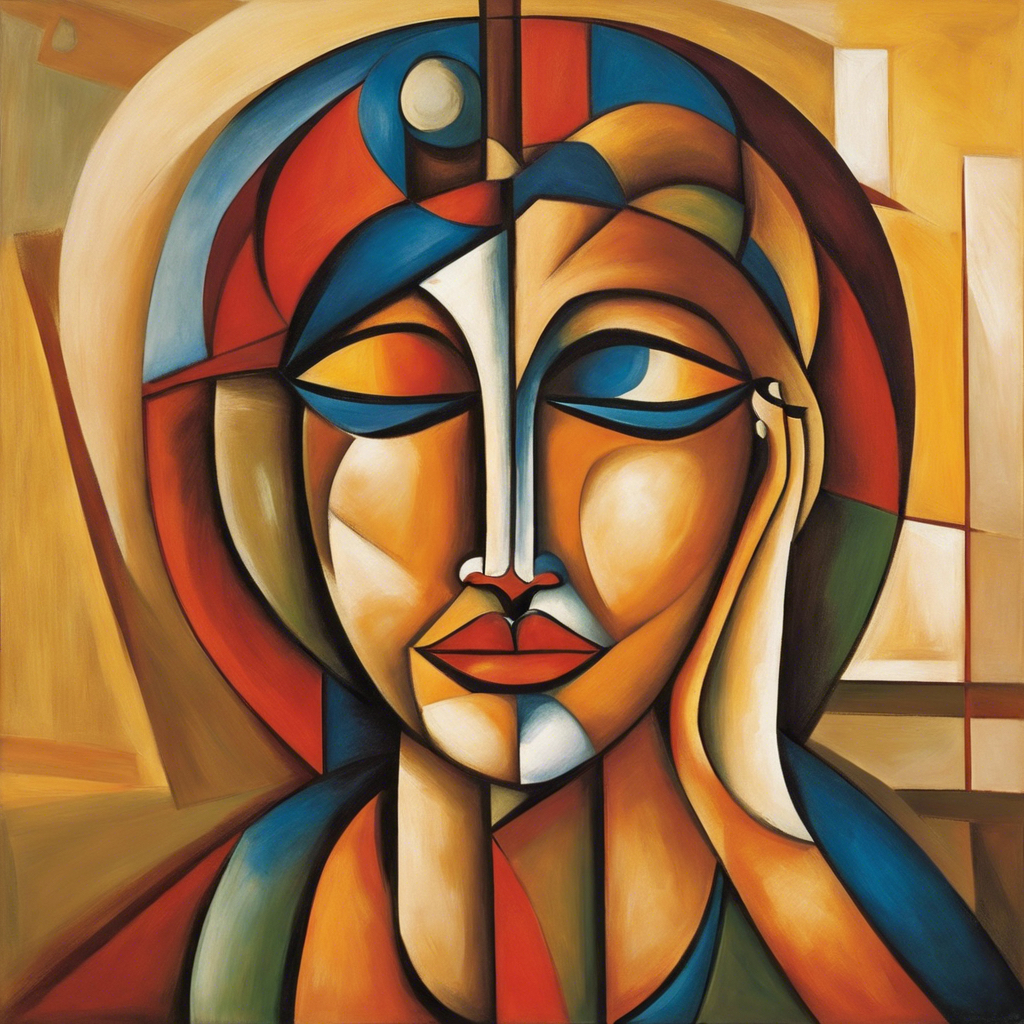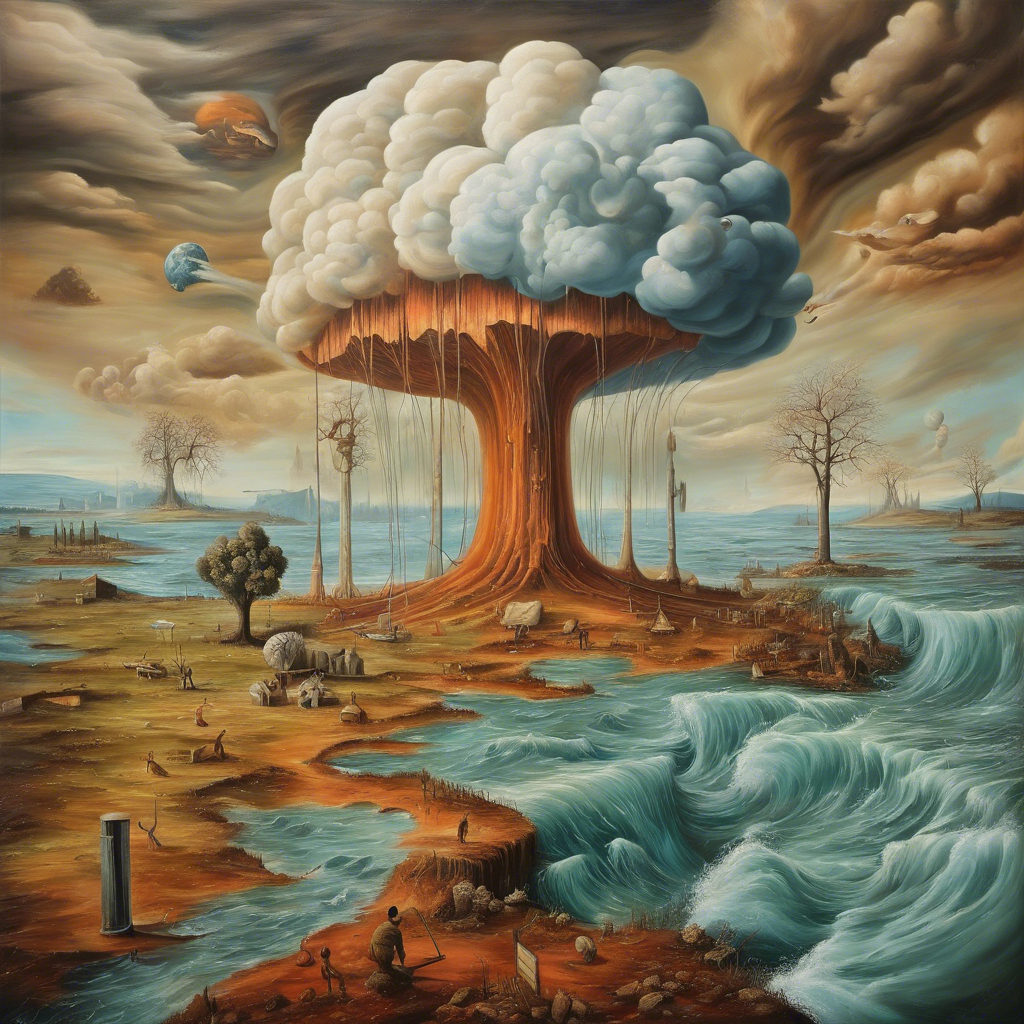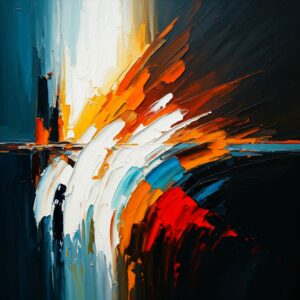Abstract Expressionism, a significant artistic movement that emerged in the mid-20th century, radically transformed the landscape of modern art. Its origins, impact, and enduring legacy continue to inspire and intrigue art enthusiasts worldwide.
Origins of Abstract Expressionism
The seeds of Abstract Expressionism were sown in the tumultuous years following World War II. Artists in New York City, particularly those associated with the Eighth Street Art Club, began to experiment with non-representational forms and expressive techniques. Influenced by European avant-garde movements like Surrealism and Cubism, these American artists sought to convey profound emotions and universal truths through abstract means.
Key figures who played a pivotal role in shaping Abstract Expressionism include:
- Jackson Pollock: Known for his “drip painting” technique, Pollock revolutionized the way art was created. By dripping and splattering paint onto a canvas, he sought to tap into the unconscious mind and create a dynamic and energetic composition.
- Mark Rothko: Rothko’s large-scale canvases, characterized by blocks of color and subtle gradations, evoke a sense of spiritual and emotional depth. His work often explores themes of human existence and the sublime.
- Willem de Kooning: De Kooning’s paintings, often featuring distorted figures and vibrant colors, are a testament to the raw energy and expressive power of Abstract Expressionism. His work is characterized by a sense of urgency and improvisation.
Impact of Abstract Expressionism
Abstract Expressionism had a profound impact on the art world and society as a whole. Some of its key impacts include:
- A Shift in Artistic Paradigm: Abstract Expressionism challenged traditional notions of beauty, representation, and the role of the artist. It emphasized the process of creation and the artist’s subjective experience over objective reality.
- American Cultural Influence: The movement solidified New York City’s position as a global center for contemporary art. American artists, once overshadowed by their European counterparts, gained international recognition and influence.
- Exploration of the Unconscious: Abstract Expressionism drew inspiration from the psychoanalytic theories of Sigmund Freud and Carl Jung. Artists sought to tap into the unconscious mind and express their innermost thoughts and feelings through their work.
- Emphasis on Materiality and Process: The movement celebrated the physicality of painting. Artists experimented with various techniques, such as dripping, pouring, and scraping, to create visually striking and tactile surfaces.
- A Legacy of Innovation: Abstract Expressionism paved the way for future artistic movements, inspiring generations of artists to explore new forms of expression and challenge conventional boundaries.
The Enduring Legacy of Abstract Expressionism
While the heyday of Abstract Expressionism may have passed, its impact continues to be felt in contemporary art. Many contemporary artists draw inspiration from the movement’s emphasis on expressive gesture, color, and the exploration of the unconscious.
Moreover, Abstract Expressionism has had a lasting influence on popular culture. Its bold and dynamic imagery has been appropriated by advertising, fashion, and design. The movement’s emphasis on individuality and self-expression resonates with contemporary audiences who seek authenticity and originality.
In conclusion, Abstract Expressionism was a revolutionary movement that transformed the course of modern art. Its emphasis on spontaneity, emotion, and the unconscious mind continues to inspire and challenge artists today. By exploring the origins and impact of this significant artistic movement, we can gain a deeper understanding of the power of art to evoke emotion, provoke thought, and shape culture.
References
- The Metropolitan Museum of Art: https://www.metmuseum.org/
- The Museum of Modern Art (MoMA): https://www.moma.org/
- Art History textbooks:
- Gardner’s Art Through the Ages by Fred S. Kleiner and Christin J. Mamiya
- The Story of Art by E.H. Gombrich
- Scholarly articles:
- Art Journal
- Art Bulletin
- October


